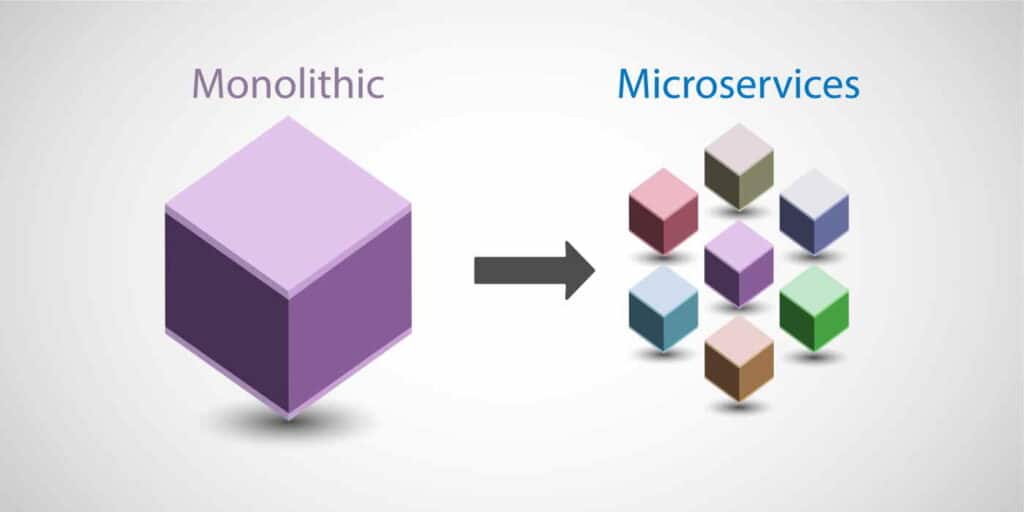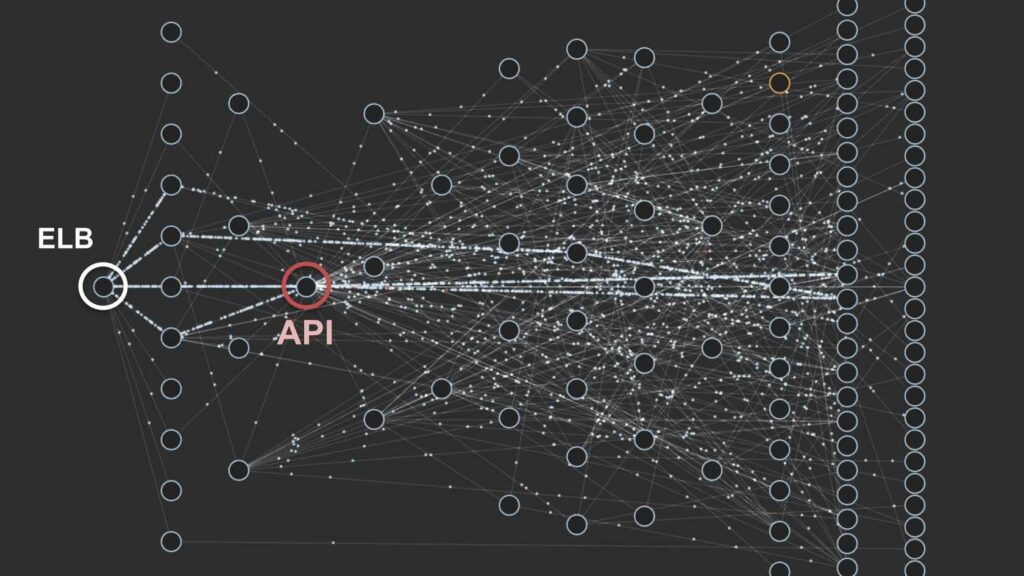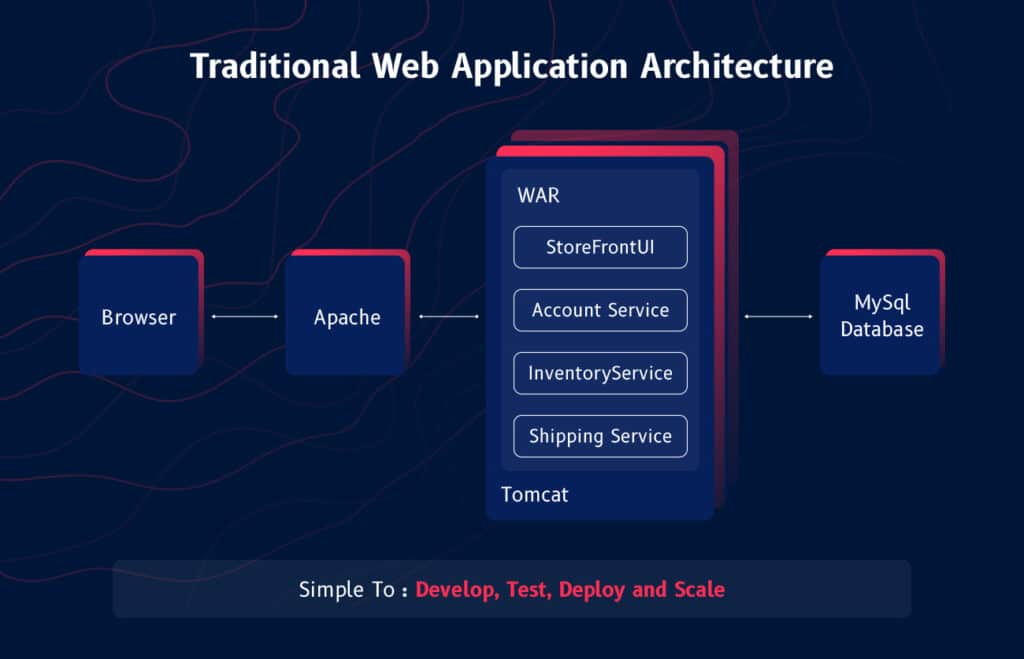As software development evolves, two major approaches have gained popularity: Monolithic Architecture and Microservices Architecture. Both offer different benefits and drawbacks and understanding these differences is essential for choosing the best approach for your specific project needs.
Contents
What is Monolithic & Microservices Architecture
A Monolithic Application is a traditional software application consisting of a single codebase. All components of the application are tightly coupled, and any changes made to the codebase require a complete rebuild and redeployment of the entire application. While Monolithic Architecture is simpler to design, develop, test, and deploy, it has limited scalability and is challenging to modify and update. Dependencies can create issues when deploying new features. Monolithic Architecture is suitable for small projects and applications that do not require much scalability or flexibility.
In contrast, Microservices Architecture structures applications as a collection of small, independent services, with each service focused on a specific business capability, and they communicate with each other through APIs. This approach is highly scalable, flexible, and easy to update. Services can be developed and deployed independently, and the architecture requires additional infrastructure and tooling. Microservices Architecture is complex to design, develop, test, and deploy, and managing services that depend on each other can be difficult. Microservices Architecture is ideal for large-scale projects that require high scalability and flexibility, need to be updated frequently, and have a larger budget and timeline.
The Pros of It All
The Advantages of Microservices Architecture
- Scalability: Microservices Architecture is highly scalable. It enables you to scale each service independently, making it easy to handle sudden increases in traffic or demand. With Monolithic Architecture, scaling is limited, and you need to expand the entire application, even if only a part of it is facing increased demand.
- Flexibility: Microservices Architecture is flexible and allows you to make changes to one service without affecting the others. This flexibility enables you to adapt to changes in your business needs and market demands quickly.
- Continuous Delivery: Microservices Architecture enables continuous delivery, allowing you to deploy new features and updates more frequently and with greater ease.
- Resilience: Microservices Architecture is designed to handle failures in individual services gracefully, making the entire system more resilient.
Here are some advantages of Monolithic Architecture
- Simplicity: Monolithic Architecture is straightforward, easy to understand, and requires less complexity than Microservices Architecture.
- Easier Development: With Monolithic Architecture, it is easier to develop an application since the entire codebase is in one place.
- Lower Overhead: Monolithic Architecture requires less infrastructure than Microservices Architecture.
- Easier Testing: Since all components of the application are tightly coupled, testing is more manageable with Monolithic Architecture.
- Faster Execution: Monolithic Architecture performs faster than Microservices Architecture since it doesn’t have the overhead of communicating with other services.
Which To Choose?
When it comes to choosing between Monolithic and Microservices Architecture, there is no clear-cut answer as to which approach is better. Both methods have their advantages and liabilities, and the choice depends on your specific project needs. Monolithic Architecture is simpler to design, develop, test, and deploy, making it suitable for small projects and applications that do not require much scalability or flexibility. It is easier to maintain and troubleshoot, making it ideal for applications with a limited budget or timeline.
On the other hand, Microservices Architecture is highly scalable, flexible, and easy to update, making it ideal for large-scale projects that require high scalability and flexibility, need to be updated frequently, and have a larger budget and timeline. It enables continuous delivery, improves resilience, and speeds up development, but it is complex to design, develop, test, and deploy.
It is essential to comprehend the benefits and hindrances of both approaches and consider your project’s specific needs when making a decision. If you are working on a small project or application that does not require much scalability or flexibility, Monolithic Architecture may be the better choice. If you are operating on a large-scale project that demands high scalability and flexibility, needs to be updated frequently, and has a larger budget and timeline, Microservices Architecture may be the better choice.




